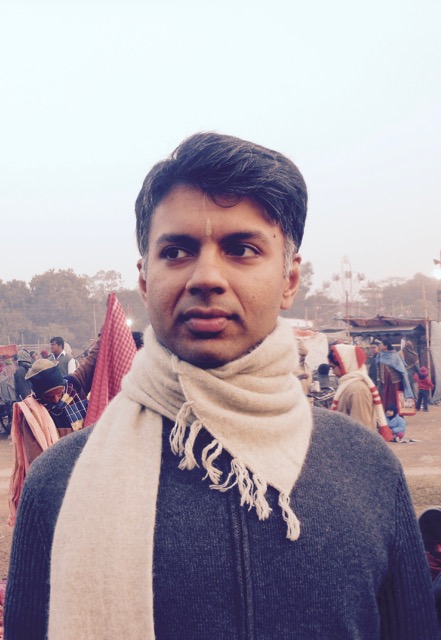 Jai Chakrabarti is a 2015 A Public Space Emerging Writer’s Fellow. A graduate of the Brooklyn College MFA program, his work has appeared in Barrow Street, Hayden’s Ferry Review, Coffin Factory, Union Station, and A Public Space. He lives in Brooklyn with his family.
Jai Chakrabarti is a 2015 A Public Space Emerging Writer’s Fellow. A graduate of the Brooklyn College MFA program, his work has appeared in Barrow Street, Hayden’s Ferry Review, Coffin Factory, Union Station, and A Public Space. He lives in Brooklyn with his family.
His story, "Lost Things," appeared in Issue Seventy-Four of The Collagist.
Here, he speaks with interviewer Dana Diehl about the structure of time in fiction, details that slant, and revision.
Where did this story begin for you? What first inspired you to write “Lost Things”?
“Lost Things” began after an episode in a long struggle my partner and I undertook to conceive a child. While many of the elements of the piece are fictionalized, the emotional pull of it likely stemmed from the feelings I wrestled with after a failed treatment at a fertility clinic. We’ve since become parents to an exuberantly happy boy, but those years of trying shaped images in my work that were borne of loss and yearning.
The sentences in this story meander. They double-back on themselves and move non-chronologically. For me, one of the lovely results of this style is the sense that I’m in two or three places at once. Is the voice in this story characteristic of your writing? How did this sentence style come about?
I think I’m obsessed about the structure of time in fiction. Aren’t our memories always overlapping with our present complications, leaving even the most grounded of us, at least a little, unmoored? I would love to say that the form finds its partner in content and that the meandering sentences, the run-arounds with time, are the beck and call that drives the piece forward, but in my experience, this is harder to do in fiction than it is in poetry. So I felt this piece borrowed more from poetry in terms of its permission to move out of linear time, and in the slipperiness of the narrative voice.
The world of this story feels vivid and bright. It crackles with details such as “the girl with a tongue so long she could curl it around a glass of beet juice” and “the terrible pitch and thunder of the aging mango tree, as it leaned in the monsoon.” How do you choose your moments of detail?
Thank you. As a reader, the images that often startle me are the ones which slant our everyday, but remain honest. Even with stories which hang on the ropes of surrealism I want to feel embodied. An overly familiar image isn’t inviting, but neither is one that doesn’t connect to our corporeal (and yet, mysterious) world.
What was your revision process for this story? What happened between the first draft and the story we see today?
For a story with a traditional linear narrative with premise, conflict, climax, etcetera, the revision process is more well-defined for me. For this type of story, I give a lot of attention to the sound of the piece, to its rhythm. I read it out loud, and where the rhythm doesn't fit the feeling I am going for, I revise it multiple times. To get to know the feelings I was going for in this piece, I wrote out a map, tracing between sentences and the piece’s recurring motifs.
Are you reading any books you’d like to recommend?
“The Beautiful Possible” by Amy Gottlieb - a novel of mystical Judaism and love and loss.
What projects are you currently working on?
I’ve just finished revisions on a novel, A Play for the End of the World, which follows the relationship of a Holocaust survivor and a woman from the American South. Set in Poland, India, and New York, it’s a love story, or, at least, a story of longing (or belonging).
